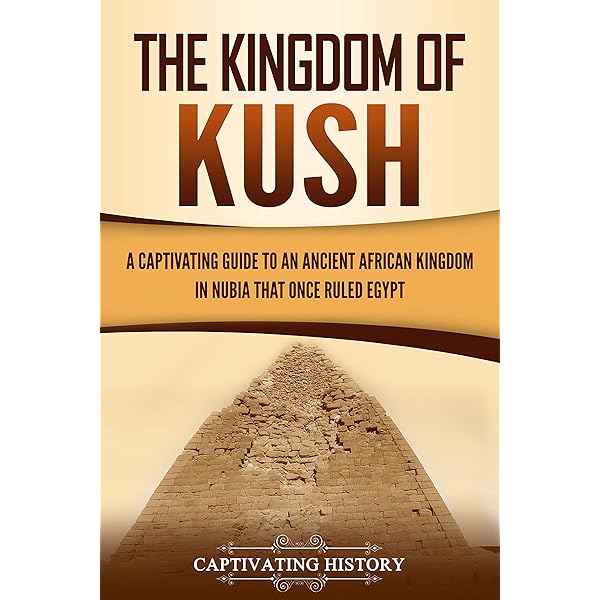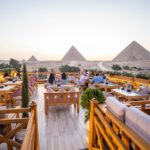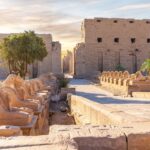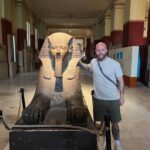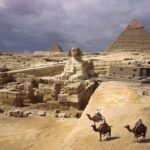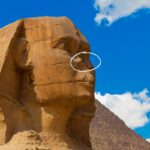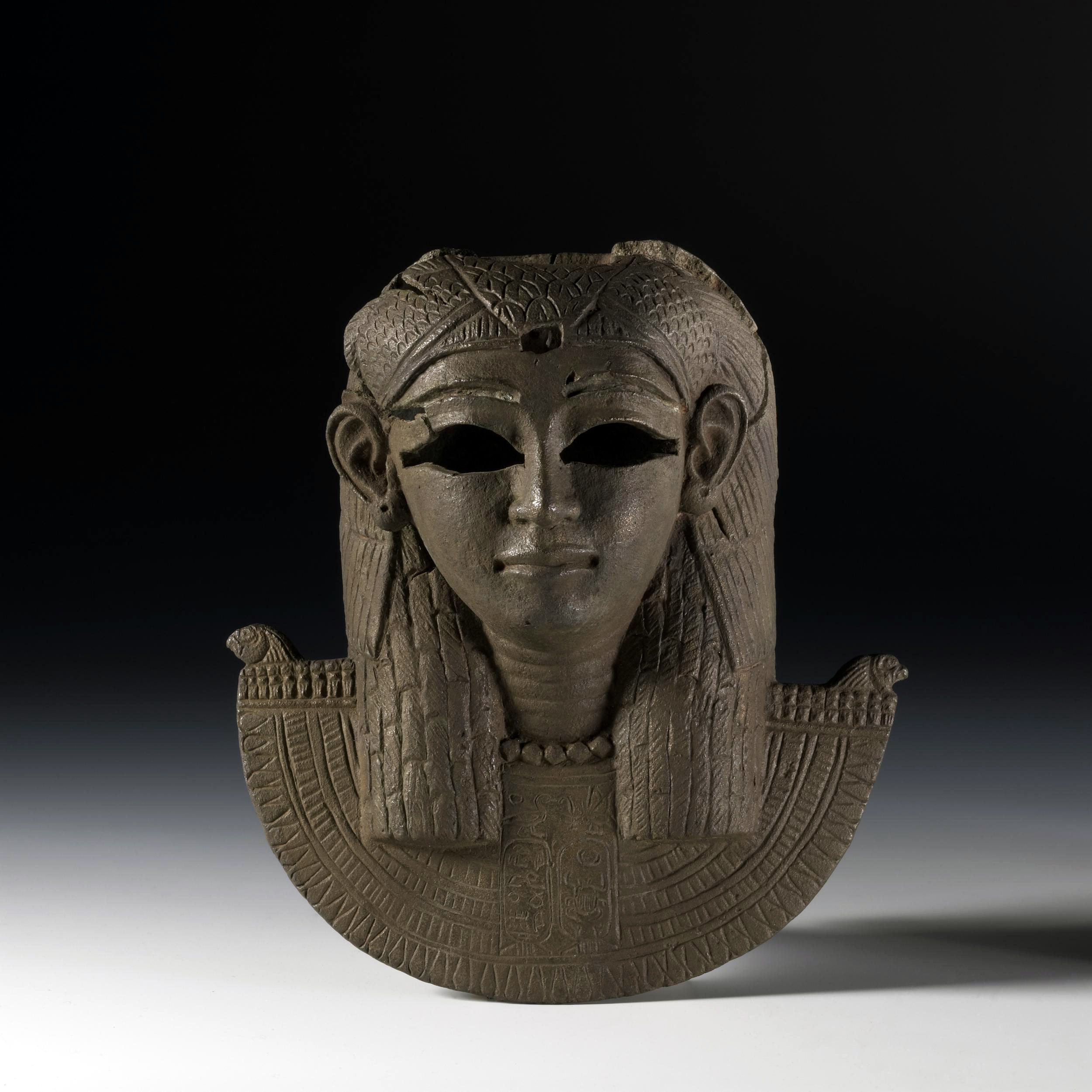
Introduction
Brief History of Nubia
Nubia, located along the Nile River in present-day Sudan and southern Egypt, boasts a rich tapestry of history that dates back to ancient times. As one of the earliest centers of civilization, it was home to powerful kingdoms such as Kush, which thrived alongside ancient Egypt. The word Nubia itself, thought to derive from the Egyptian word for gold, highlights its historic significance as a region rich in resources.
Significance of Nubian Landmarks
The landmarks of Nubia are not just remnants of its glorious past; they are monumental testimonies to the ingenuity and cultural depth of its people. Key sites include:
- The Pyramids of Meroë: Unique in their design, these pyramids are smaller yet distinctively Nubian, standing as a stark contrast to the larger, more famous Egyptian pyramids.
- Abu Simbel Temples: Carved into the mountains, these awe-inspiring structures were commissioned by Pharaoh Ramses II and continue to captivate visitors with their grandeur.
Understanding these landmarks provides insight into the architectural advancements and religious practices of Nubian civilization. Such connections foster a deeper appreciation for Nubia’s enduring legacies, inviting explorations of its cultural contributions to the world.

The Ancient Kingdom of Kush
Overview of the Kingdom of Kush
The Kingdom of Kush, thriving from around 1070 BC to 350 AD, was a formidable power in ancient Nubia. It united various city-states and became a cultural crossroads between Africa and the Mediterranean. Growing up, history enthusiasts often share tales of its fierce warrior queens and prosperity fueled by trade and agriculture, showcasing a vibrant society.
Nubian Pyramids: Architectural Marvels
One of Kush’s most fascinating contributions is its unique pyramid structures. Unlike the Egyptian pyramids, Nubian pyramids are characterized by:
- Steeper sides: This distinct architectural style heightens their visual impact.
- Smaller scale: Though more compact, they boast elaborate decorative elements.
These pyramids, primarily located at sites like Meroë and Napata, serve as reminders of Kush’s rich burial practices and their reverence for the afterlife. Each structure tells stories of dynasties, often adorned with carvings that reflect the civilization’s spiritual and artistic depth. The allure of these ancient monuments continues to draw historians and travelers alike, curious about the mysteries they hold.

Temples and Monuments in Nubia
Abu Simbel Temples: Awe-Inspiring Structures
The Abu Simbel Temples, carved into solid rock by Pharaoh Ramses II in the 13th century BC, are truly breathtaking. Picture standing before their grand facades which rise dramatically from the desert landscape. These temples were not only monumental in size but also reflective of the era’s artistic genius. Key features include:
- Colossal Statues: Each temple entrance boasts four giant statues of Ramses, evoking a sense of grandeur.
- Astounding Alignment: Twice a year, sunlight illuminates the inner sanctuary, showcasing the architectural precision of the ancient builders.
Karnak Temple Complex: Religious Center of Ancient Egypt
Transitioning from Abu Simbel, the Karnak Temple Complex offers another glimpse into ancient devotion. Considered one of the largest religious sites in the world, Karnak was a center for worshiping the Theban triad of Amun, Mut, and Khonsu. Visitors are often taken aback by:
- The Great Hypostyle Hall: Featuring 134 massive columns, it’s a breathtaking example of ancient engineering.
- Sacred Lake: A serene area that served ritual purposes, reflecting the grandeur and spiritual significance of the complex.
Both Abu Simbel and Karnak testify to the architectural and religious fervor of ancient Nubian and Egyptian civilizations, drawing visitors who seek to explore their magnificent heritages.

Nubian Museum: Preserving the Rich Heritage
Exhibits and Artifacts
The Nubian Museum, located in Aswan, is a treasure trove dedicated to the rich history and culture of Nubia. As you step inside, visitors are greeted with a stunning array of artifacts, showcasing everything from ancient pottery to intricately crafted jewelry. Highlights include:
- Statues and Sculptures: Remarkable works of art that tell stories of Nubian pharaohs and deities.
- Mummy Preservation Techniques: Displays that explain how ancient Nubians honored their dead, providing insight into their beliefs surrounding the afterlife.
Impact of the Museum on Nubian Culture
Transitioning from these artifacts, the museum profoundly impacts Nubian culture by fostering a sense of identity and pride. It serves as a platform for local artists, offering exhibitions that celebrate contemporary Nubian life and traditions.
- Cultural Awareness: The museum educates both locals and tourists, helping to bridge gaps in understanding Nubian heritage.
- Community Engagement: Workshops and events encourage participation, ensuring that the legacy of Nubia continues to thrive.
Ultimately, the Nubian Museum stands as a beacon of preservation, reminding visitors of the region’s significant history while actively promoting its vibrant culture today.
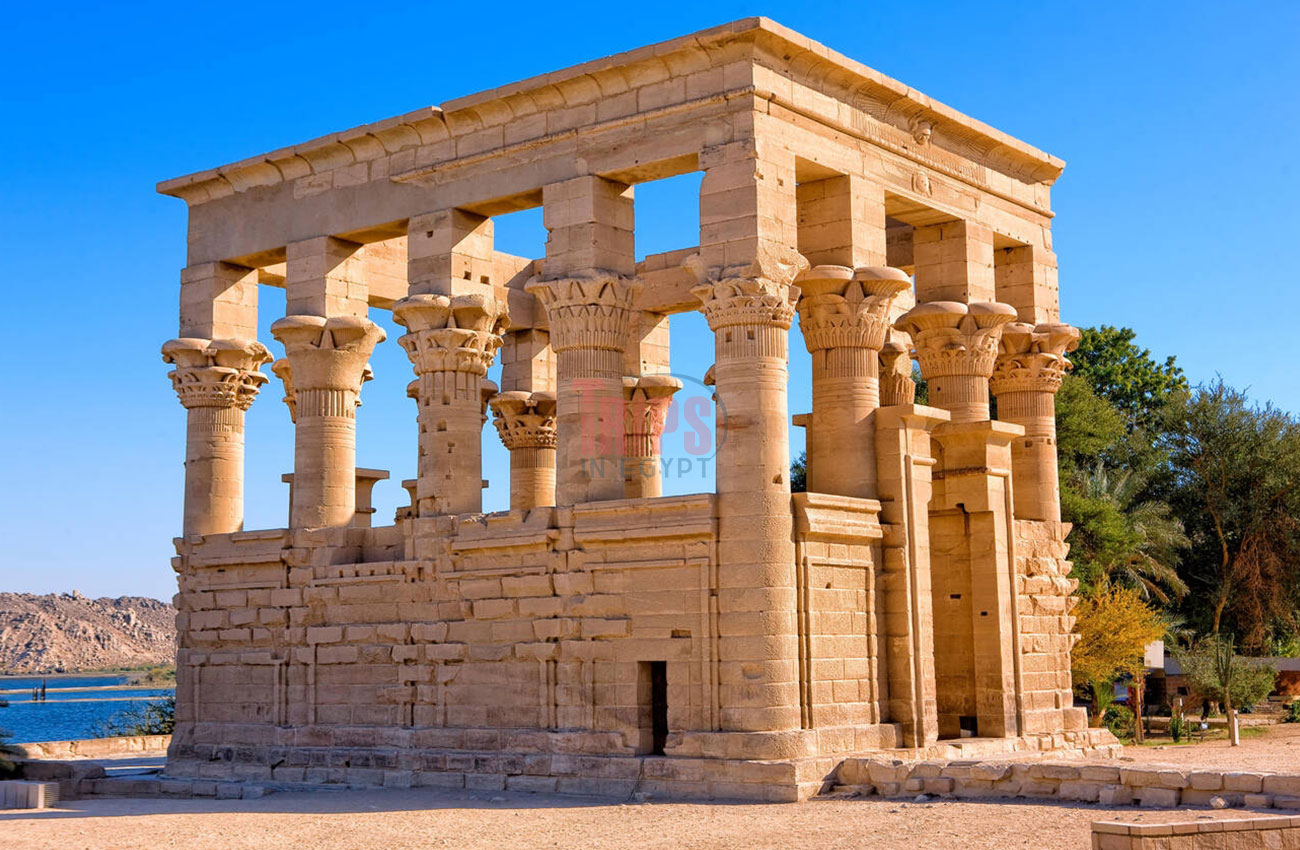
Exploring Nubian Civilization
Daily Life in Ancient Nubia
Delving into daily life in ancient Nubia reveals a society rich in tradition and community. Families often thrived through farming, fishing, and animal husbandry. Picture vibrant villages where:
- Craftsmanship: Skilled artisans created pottery and textiles, showcasing intricate designs.
- Social Customs: Festivals and communal gatherings celebrated harvests, strengthening relationships among neighbors.
Trade and Interaction with Other Civilizations
As Nubians engaged in trade, they became adept at navigating relationships with neighboring civilizations, particularly Egypt. Their strategic location facilitated the exchange of goods, ideas, and culture. Key trade elements included:
- Gold and Resources: Nubia was renowned for its gold mines, making it a sought-after partner for trade.
- Cultural Exchanges: Through interactions, Nubians adopted various Egyptian customs while maintaining their distinct identity, creating a vibrant cultural mosaic.
The blend of daily life intricacies and dynamic trade relationships not only enriched Nubian civilization but also laid the groundwork for enduring legacies, inviting modern explorers to uncover the fascinating world of ancient Nubia.

Modern Nubia: Culture and Traditions
Nubian Music and Dance
Stepping into modern Nubian culture, one cannot overlook the vibrancy of its music and dance. Rhythmic beats and melodious tunes echo throughout villages, often accompanied by traditional instruments like the oud and drums. Events are alive with:
- Colorful Dances: Performers showcase movements that tell stories of love, celebration, and unity, captivating audiences.
- Community Gatherings: These musical celebrations are a staple, bringing families and friends together while preserving ancestral traditions.
Traditional Nubian Cuisine
Transitioning from the rich sounds of Nubian life, the culinary scene offers a delightful experience. Traditional Nubian cuisine reflects a blend of local ingredients and time-honored recipes. Key dishes feature:
- Kisra: A staple flatbread made from sorghum, often served with flavorful stews.
- Tamia: Nubian falafel made from fava beans, bursting with spices and served with fresh salads.
The warmth of Nubian hospitality shines through in every meal, as sharing food fosters community bonds. These cultural elements encapsulate the essence of modern Nubia, inviting all to appreciate its colorful heritage while forging a path into the future.
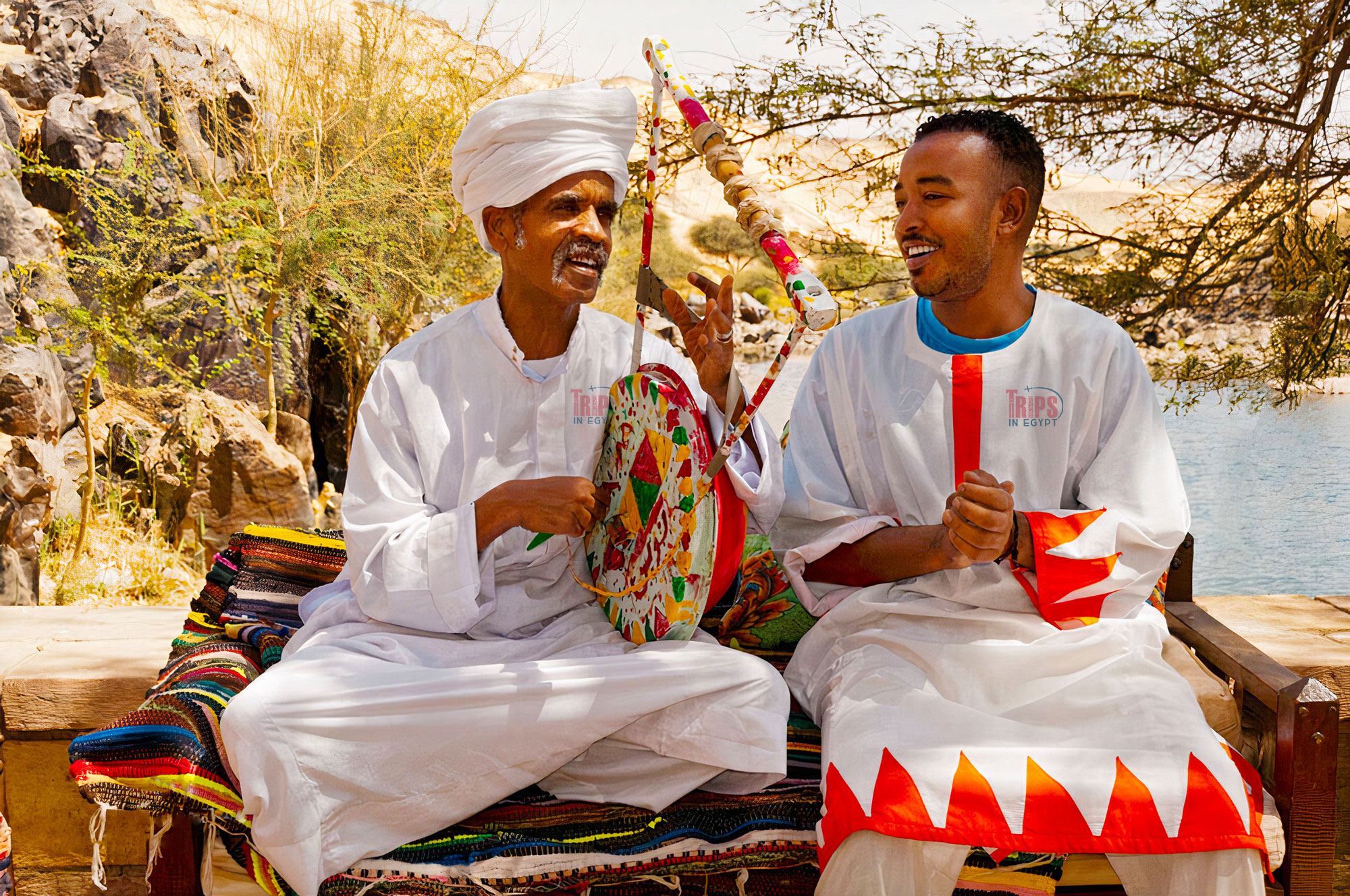
Travel Tips for Visiting Nubia
Best Time to Visit
Planning a visit to Nubia? Timing can make all the difference! The ideal months are from October to April, when the weather is pleasantly mild. During these months, travelers can enjoy exploration without the oppressive heat. Picture wandering through ancient sites, surrounded by stunning landscapes and vibrant local life—truly an unforgettable experience!
Cultural Etiquette and Norms
As you immerse yourself in Nubian culture, it’s essential to understand local customs. Respecting etiquette enhances your connection with the community. Some key guidelines include:
- Dress Modestly: While Nubians are friendly, modest attire is appreciated, especially in rural areas.
- Greetings: A warm “Salaam” (peace) is a common way to greet locals, fostering goodwill.
Carrying a genuine smile and an open heart can transform your travel experience, allowing you to form deeper, meaningful bonds with the welcoming Nubian people. Following these travel tips will not only enrich your journey but also help secure cherished memories of this remarkable region.

Preserving Nubian Heritage
Challenges in Conservation Efforts
Preserving Nubian heritage is a complex endeavor. Various challenges arise, including:
- Environmental Factors: Erosion and flooding threaten ancient structures, particularly those along the Nile.
- Urban Development: Growing cities often encroach on historical sites, risking their integrity.
Despite these obstacles, passionate locals and organizations tirelessly work to advocate for preservation, showcasing their dedication to safeguarding this rich history.
Role of Tourism in Safeguarding Nubian Landmarks
Transitioning to the positive aspects, tourism plays a vital role in conservation efforts. Visitors not only contribute financially but also spark interest in Nubian heritage. Some key benefits include:
- Increased Awareness: Exposure to Nubian culture encourages advocacy for preservation.
- Funding for Restoration: Entry fees and donations help support restoration projects and educational initiatives.
The blend of local dedication and tourist interest creates a powerful force for preserving Nubian landmarks, ensuring that future generations can appreciate their cultural heritage. By being mindful travelers, we can all play a part in protecting the rich history of Nubia.

Conclusion
Recap of Key Insights
In exploring Nubia, we uncovered a vibrant tapestry of history, culture, and tradition. Key insights included the ancient Kingdom of Kush, the architectural marvels of the Nubian pyramids, and the enduring significance of modern Nubian customs. Each aspect reflects a rich heritage that has shaped not only Nubia but also the surrounding world.
Continuing Fascination with Nubia
Nubia’s allure continues to captivate travelers, historians, and culture enthusiasts alike. With its stunning landscapes and profound historical significance, many often find themselves enchanted by its stories and traditions.
- Cultural Events: Festivals celebrating Nubian music and dance draw visitors eager to experience the vibrancy of its culture.
- Educational Initiatives: Learning opportunities about Nubian heritage in museums and cultural centers foster a deeper understanding.
This ongoing fascination ensures that Nubia remains a vital part of our collective historical narrative, inviting exploration and appreciation for generations to come. By embracing and sharing these experiences, we help keep Nubian heritage alive and thriving.

